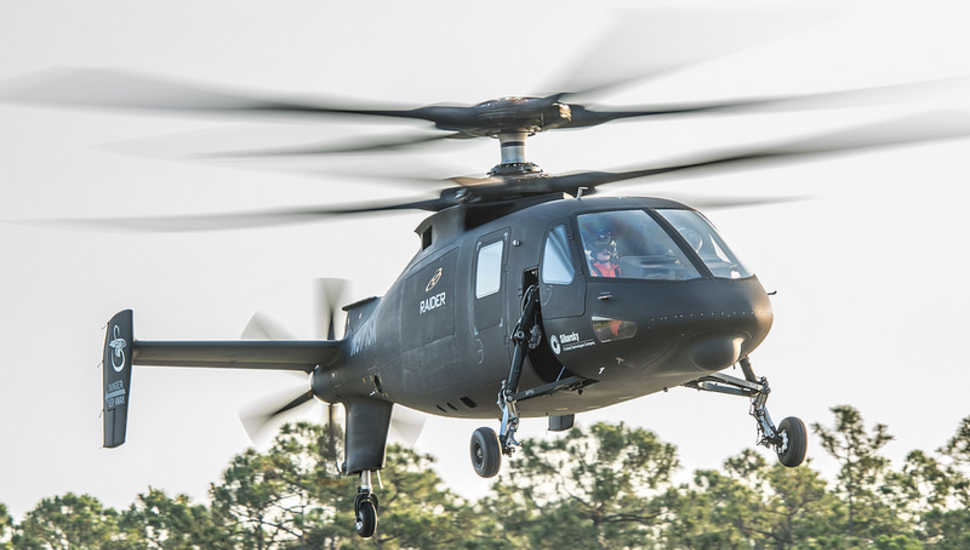The US Army awarded five competitors contracts to design, build and test Future Attack Reconnaissance Aircraft (FARA) prototypes.
The five teams who received Other Transaction Authority (OTA) contracts for the service’s scout rotorcraft programme are: AVX Aircraft, who is partnered with L-3 Communications Integrated Systems, Bell, Boeing, Karem Aircraft and Sikorsky.
The US Army is attempting to develop and fly its next-generation reconnaissance aircraft on an accelerated schedule, with the aim to field aircraft by 2028. It anticipates awarding two teams contracts in 2020 to build prototypes, with a fly-off competition in 2023.

Sikorsky S-97 Raider demonstrator
Sikorsky
Competitors in the FARA programme have varying aircraft development experience and are taking different approaches.
AVX and L-3 Communications: Their joint proposal is a co-axial helicopter design, with a wing and two ducted pusher propellers on its aft fuselage. Neither company manufactures manned aircraft currently for the US Army.
Bell: Its proposed design leans on the rotor technology, the fly-by-wire systems and control systems from its conventional Bell 525 Relentless helicopter. The company formerly manufactured the OH-58D Kiowa, the US Army’s last scout helicopter, which was retired in 2017.
Boeing: The company declines to reveal details of its proposal, citing competitive considerations. It manufactures the AH-64 Apache attack helicopter and AH-6 Little Bird light gunship – two helicopters that could be partially, if not entirely, replaced by FARA.
Karem Aircraft: The design firm has put forward a series of tiltrotor concepts of different sizes for the Future Vertical Lift programme. The company is founded by Abraham Karem, who invented the GNAT 750 unmanned air vehicle, which evolved into the General Atomics Aeronautical Systems MQ-1 Predator.
Sikorsky: The helicopter manufacturer has been flight testing its co-axial, compound S-97 Raider demonstrator helicopter for more than a year. Due to the advanced nature of the rotorcraft and its total flight time, the company is seen as a frontrunner by many. The manufacturer makes the UH-60 Black Hawk, the US Army’s most ubiquitous helicopter.
With plans to get two prototypes flying within a matter of several years, the US Army boasts that using OTA contracts and a streamlined bureaucracy within US Army Futures Command – the group charged with spearheading its Future Vertical Lift programme – has shaved off time from its usually slow acquisition process. OTAs are seen as providing the service with greater speed and flexibility when contracting prototypes because they exempt it from federal procurement laws and regulations, which require rigid rules around issues such as termination clauses, cost accounting standards, payments, intellectual property and contract disputes.
"This is not procurement as usual,” says Joseph Giunta, executive director for US Army Contracting Command. “The OTA capability gives us flexibility, allowing us to be more responsive to the timelines in order to meet specific requirements."
General John Murray, commanding general of US Army Futures Command, adds that focused teamwork between the various stakeholders in the programme helped greatly as well.
"In just over a one-year period, the Army moved from the FARA 'kick-off' to now awarding prototype contracts - a process that traditionally takes three to five years to achieve," he says.
Source: FlightGlobal.com


























